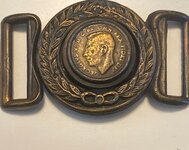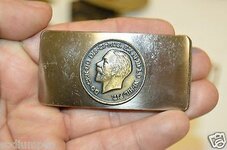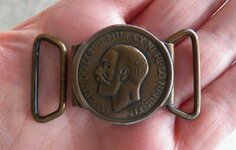hunting deer
Hero Member
I found this two days ago. The only pics of any I could find came from this site and another detecting site. I'm leaning toward a 1912 era United States Marine Core belt clasp. The info came from a past posting on this site where one was described but not shown. It was described as being part of a WW1 era USMC uniform. I haven't found any other references researching uniforms from that era and decided to post it on here. Also a Big Thanks to Treasurenet for keeping this site going. I bet like alot of things, it's easier said than done! I think a lot of people love this site, myself included, and hope its around for a long time to come!
Attachments
Last edited:












